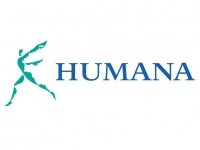Humana (HUM) Writes Corridor Receivables Off; Cites Affordable Care Act

Get Alerts HUM Hot Sheet
Revenue Growth %: +9.7%
Financial Fact:
Interest expense: 47M
Today's EPS Names:
FRSB, DGICA, UXIN, More
Join SI Premium – FREE
Humana Inc. (NYSE: HUM) announced that a change in interpretation of the Affordable Care Act (ACA) associated with a recent court decision(a) involving parties unrelated to the company now requires the company, under applicable accounting rules, to write-off essentially all of the $591 million in receivables associated with the risk corridor premium stabilization program(b) outstanding as of September 30, 2016. The company anticipates collection of approximately $8 million in risk corridor receivables outstanding as of September 30, 2016 associated with the 2014 plan year based on information published by the Centers for Medicare and Medicaid Services (CMS) on November 18, 2016. The company has previously collected approximately $30 million from CMS for risk corridor receivables also associated with the 2014 plan year.
Risk corridor receivables previously recorded resulted in higher premium income in the related period accrued. Consequently, the company will reflect the write-off of the receivables as an adjustment to premium income in the quarter ending December 31, 2016 (4Q16). The company expects to exclude the impact of the risk corridor receivables write-off from its Adjusted EPS for 4Q16 and FY16.
The risk corridor premium stabilization program expires on December 31, 2016, so the write-off of these receivables will have no impact on the company’s expected performance for the year ending December 31, 2017. Importantly, risk corridor receivables were not previously allowed as assets for statutory surplus and, therefore, were already fully funded by the parent company.
Humana’s core businesses continue to perform as previously expected. The company has also now included an estimate of transaction and integration costs for 4Q16 in its projections for the year ending December 31, 2016 (FY16). Humana’s updated GAAP(c) and Adjusted(d) diluted earnings per common share (EPS) guidance for FY16 follows:
| EPS – FY16 | GAAP EPS | Adjustments to GAAP (d) | Adjusted (Non-GAAP) EPS | |||||||
| Guidance as of November 4, 2016 | Approximately $8.68 | At least $0.82 | Approximately $9.50 | |||||||
| Write-off of risk corridor receivables (b) | (2.45) | 2.45 | - | |||||||
| Transaction and integration costs for 4Q16 not previously estimated | (0.14) | 0.14 | - | |||||||
| Guidance as of December 8, 2016 | Approximately $6.09 | Approximately $3.41 | Approximately $9.50 | |||||||
The company has included financial measures in this release that are not in accordance with GAAP. Management believes that these measures, when presented in conjunction with the comparable GAAP measures, provide investors greater transparency into the company’s core business operations and operating performance. Management uses these non-GAAP financial measures as indicators of the company’s business performance, as well as for operational planning and decision making purposes. Non-GAAP financial measures should be considered in addition to, but not as a substitute for, or superior to, financial measures prepared in accordance with GAAP. All financial measures in this press release are in accordance with GAAP unless otherwise indicated. | ||||||||||
Footnotes
(a) On November 10, 2016, the U.S. Court of Federal Claims ruled in favor of the government in one of a series of cases filed by insurers against the Department of Health and Humana Services (HHS) to collect risk corridor payments, rejecting all of the insurer’s statutory, contract and Constitutional claims for payment. The company had maintained the receivable in previous periods in reliance upon the interpretation previously promulgated by HHS that the risk corridor receivables were obligations of the U.S. government. Given this court decision, however, the company’s conclusion with respect to the ultimate collectability of the receivable has shifted, and accounting rules require that the receivable be written off. Land of Lincoln Mutual Health Insurance Company v. United States; United States Court of Federal Claims No. 16-744C.
(b) Under health care reform, premium stabilization programs, commonly referred to as the 3Rs, became effective January 1, 2014. These programs include a permanent risk adjustment program, a transitional reinsurance program, and a temporary risk corridors program designed to more evenly spread the financial risk borne by issuers and to mitigate the risk that issuers would have mispriced products. In each case, operation of the program is subject to appropriation or other federal administrative action. The company had previously disclosed in its filings with the Securities and Exchange Commission (SEC), “. . . to the extent certain provisions of the Health Care Reform Law are successfully challenged in court or there are changes in legislation or the application of legislation, there can be no guarantee that receivables established under the reinsurance, risk corridor or risk adjustment provisions of the Health Care Reform Law will ultimately be collected.”
(c) GAAP is Generally Accepted Accounting Principles.
(d) Adjusted EPS guidance for FY16 excludes:
a. Pretax transaction and integration costs associated with the pending transaction with Aetna Inc. of $105 million, or $0.63 per diluted common share.
b. Amortization expense for identifiable intangibles of $77 million pretax, or $0.33 per diluted common share
c. The write-off of risk corridor receivables totaling $583 million pretax, or $2.45 per diluted common share, in light of the change in interpretation of the ACA demonstrated by the recent court decision referenced in footnote (a) above.
Serious News for Serious Traders! Try StreetInsider.com Premium Free!
You May Also Be Interested In
- GXO Logistics, Inc. (GXO) Launches Notes Offering
- Greenlane Holdings Inc. (GNLN) Receives Nasdaq Non-compliance Notice
- Siebert Financial Corp (SIEB) Receives Nasdaq Non-compliance Notice
Create E-mail Alert Related Categories
Corporate News, GuidanceRelated Entities
Earnings, Definitive AgreementSign up for StreetInsider Free!
Receive full access to all new and archived articles, unlimited portfolio tracking, e-mail alerts, custom newswires and RSS feeds - and more!



 Tweet
Tweet Share
Share